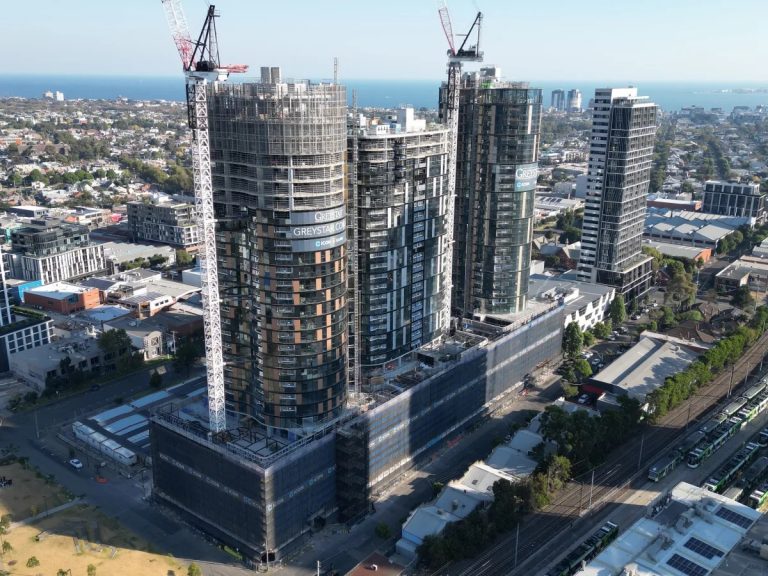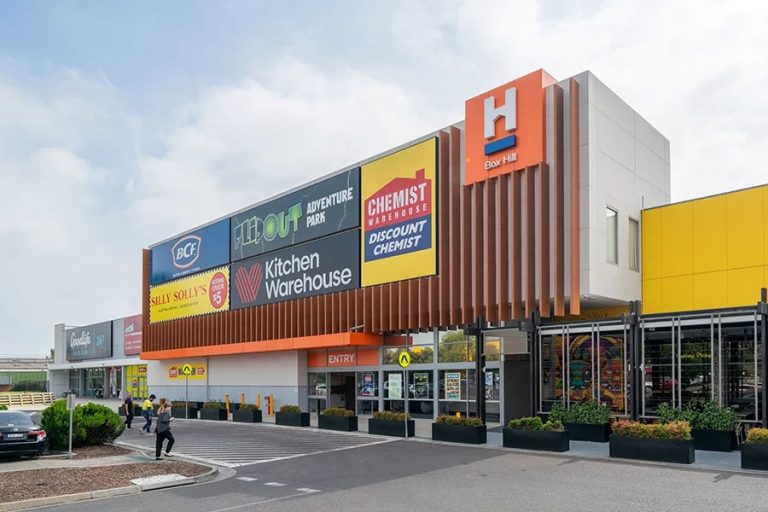Our complete guide to investing in commercial property

Commercial property investment may look like the exclusive preserve of the rich and famous from afar, but edge a little closer and you’ll see that it’s well within many residential landlords’ grasp.
That’s not to say building a strong commercial portfolio is easy. Nor that it doesn’t pose greater risks than its residential equivalent. But a wide range of price points mean that, as long as you’re willing to go a little deeper in your research, it’s well and truly on the table. And, as with most higher risk investments, the rewards can be great.
Here’s what you need to know about buying commercial property.

Most commercial properties can be categorised into one of three types: office, retail, or industrial. Picture: realcommercial.com.au
How is commercial property investment different from residential property investment?
Besides the fact that both involve property, there are few similarities between these two types of investment. Everything from the average lease length to the level of risk is different, and so how you approach one varies greatly from how you approach the other.
One of the key points of difference revolves around the lease. Commercial leases are much longer and, unlike their residential counterparts, play an important role in determining the value of a property. This is because it’s much harder to replace a commercial tenant than a residential one.
That demand for commercial properties is far more elastic than demand for residential properties also means that the vacancies between commercial tenants tend to be far longer than those between residential tenants. Coupled with the sector’s increased vulnerability to broader economic shocks, this is why commercial properties need to offer greater yields to attract investors; if the returns weren’t as high, investors would baulk at the risks.
And that’s the long and short of it when it comes to explaining commercial property investment to residential investors: the risks are greater, and the returns are higher.

Large companies with sustainable business models are regarded as “blue-chip” tenants. Picture: realcommercial.com.au
What are the pros of commercial property investment?
The main benefit of commercial property investment is that it promises higher returns, often without the same degree of micro-management required by residential investment. Here’s why.
- Higher yields / greater cash flow – commercial properties tend to offer rental yields between 5% and 12%, much higher than the 3-4% typically offered by their residential counterparts. This means that many commercial investments are cash-flow positive.
- Longer leases – while residential tenants rarely sign leases longer than one year, the minimum lease required in commercial property is typically three years-long, with many stretching to as long as 15.
- Annual rent increases – the lion’s share of commercial agreements have fixed rental increases built into the lease. What’s more, annual increases between 3-4% are fairly common, which is a fair bit higher than the current level of inflation (1.8% in 2018).
- Tenant pays outgoings – most commercial tenants sign what are known as ‘net leases’, which require them to pay for most, if not all, of a property’s outgoings. This includes council rates, insurance and land tax, as well as maintenance and repairs.
- Tenants are more inclined to look after the property – the responsibility of running a business provides tenants with a greater incentive to keep on top of maintenance and repairs.
- Diversification – investing in a commercial property confers the benefits of diversification on investors who otherwise would have only invested in residential properties. Owning both commercial and residential properties minimises an investor’s exposure to downturns in either market.
- Tax-effective ownership structures – you can buy a commercial property through a number of different entities, such as a company, individuals in partnership, trustees of discretionary trusts, or your own self-managed super fund. Each offer different benefits, and so you should ask your solicitor or accountant which best suits your needs.
- Broad scope for depreciation – commercial investors can also claim thousands of dollars in tax breaks through depreciation.
- Wide range of price points – while petrol stations, large offices and shopping malls sell for tens of millions, a surprisingly large number of city carparks and other commercial sites can be snapped up for five-figure sums. This means commercial property is open to many mum and dad investors.

The lease and strength of the tenant in place is often as important in determining a site’s value as its location. Picture: realcommercial.com.au
What are the cons of commercial property investment?
As you might have expected, the higher returns promised by commercial property investment come at a cost.
- Stricter terms of finance – as the level of risk is widely perceived to be higher in commercial property, banks generally require higher deposits – typically a minimum of 30% – and charge higher interest rates and administrative fees.
- Increased exposure to economic cycles – demand for goods and services is more elastic than demand for housing, which means that commercial property is more sensitive to changes in the economy.
- Requires deeper understanding of economics – given commercial properties are more sensitive to economic cycles, commercial investors require a deep understanding of how the broader economy is performing, to ensure they buy a property that attracts tenants with profitable and sustainable businesses.
- Longer vacancies – everything from the increased exposure to economic cycles to the added time it takes to conduct any necessary repairs means vacancies between commercial tenants tend to be much longer than those between residential tenants. Which means you’ll often need to cover all expenses without the support of a rental income.
- Rental incentives – both the extended lease and high costs associated with moving into a commercial property mean that commercial landlords are often expected to offer incentives, such as rent-free periods and fit-out assistance, to get a deal over the line.
- Costly maintenance and repairs – while tenants are typically required to foot the bill for ongoing expenses, a commercial landlord will have to spend a lot more on renovations than a residential landlord, should they need to make upgrades during untenanted periods.
- Harder to sell – the higher level of risk associated with commercial properties means that it generally takes much longer to sell one. This is especially true if you are attempting to sell an untenanted property, or the tenant you have in place is either nearing the end of their lease or operating in an industry that’s facing significant headwinds.
- More complex leases – unlike residential leases, there’s a lot of variation between commercial leases, with pretty much every term open to negotiation. This means you’ll need to lean a little more heavily on lawyers and accountants.

Commercial investors need a good understanding of economics to ensure they choose a tenant with a profitable and sustainable business model. Picture: Jamie Davies/Unsplash
Factors to consider before buying a commercial property
Because it’s much harder to find commercial tenants than residential ones, and because the sector is more exposed to changes in the economy, buying a property which already has a commercially successful tenant on a long-term lease is the holy grail of commercial property investment.
If you have a reliable tenant in place, you’ll enjoy greater cash flow benefits and rental certainty, and face fewer ongoing expenses, than you would if you stuck to residential property investment. But while it’s arguably the most important, it’s not the only factor you need to consider.
1. The lease and the tenant
For reasons we’ve already explained, the lease and tenant are the first things you should look at when evaluating the viability of an investment.
Widely regarded as “blue-chip” tenants, corporate or government entities are the most sought-after, as their superior financial resources mean they’re less likely to default on their rent. But they’re far from the only desirable tenants.
What you’re after is a business that matches the location and operates in a sector with strong long-term prospects (think technology and health rather than traditional retail and manufacturing).
Ideally, the property will already come with a tenant – one which has recently signed a long-term lease with built-in annual rent increases. But if the property is vacant, you need to make sure that it ticks enough boxes to attract valuable suitors – a task which the points below offer some insight into conducting.
2. The state of the economy
Commercial tenants are more vulnerable to economic shocks than residential tenants, as while people always need a place to live, demand for products and services is far more elastic.
Consequently, everything from consumer spending to technological disruption affects demand for commercial property, which means a slight economic shock could make it hard for you to find a tenant.
And so, you should stay abreast of important economic developments to ensure you choose a tenant that pays the rent on time comfortably.
3. The location
As with residential properties, location plays an important role in determining the value of commercial property. The only difference is in what’s included on the list of desirable amenities.
For example, if you’re considering buying a warehouse, you’ll want a site that is close to major roads, airports and ports, as close proximity to major transport hubs facilitates the transportation of goods.
On the other hand, if you buy a retail store, you’ll need to take into account the demographics of the area before choosing a tenant. If the business’s target market is poorly represented among the local community, then perhaps you’d be better off bringing in another business.
Similarly, if the local area is saturated with a certain commercial property type, it’s often advisable to broaden your search, as an oversupply of similar properties will make it difficult for you to secure a reliable tenant on a long-term lease.

Commercial investors must take into an area’s demographic when choosing a suitable tenant for their property. Picture: Annie Spratt/Unsplash
4. Planned infrastructure and supply changes
When assessing the location and strength of the local market, it’s important to look towards the future, as what may look like a strong business proposition today may descend into a loss-making venture tomorrow.
For example, if there are plenty of infrastructure projects in the pipeline on the other side of town, you might want to reconsider buying a property on this side, as you may struggle to convince businesses to move into your property when they could move into one that’s closer to the improved infrastructure.
On the other hand, if the suburb in which you’re considering buying a property will soon be awash with new projects, property prices will likely rise in the near future, and so it might be worth bringing forward your purchase to avoid playing an inflated price.
And it’s important to keep an eye on future developments, too. For example, if plenty of similar properties are scheduled to hit the market at the same time in the nearby future, you may struggle to secure a reliable tenant amid the increased competition, even if the property ticks all other boxes in today’s market.
5. The property itself
Last but not least is the quality of the building itself. Make sure the property has a layout that is suitable to the businesses you hope to attract and that the bones of the building are in good health.
As enticing as the cashflow opportunities and favourable lease structure may be, don’t let a desirable location and deep pipeline of infrastructure projects trick you into paying more than a property’s worth.
Be sure to compare the property’s asking price with others on the market, and be prepared to negotiate for a much lower price if the building is in serious disrepair.

If a suburb has a deep pipeline of infrastructure projects, bringing forward your purchase could help you avoid paying an inflated price. Picture: Tom Rumble/Unsplash
What factors affect demand for commercial property?
While the section above provides an insight into the decisions you’ll need to make when weighing up one potential investment against another, the factors below are more concerned with the developments that affect demand within the sector as a whole.
1. Interest rates
Attempting to predict the Reserve Bank of Australia’s next interest rate move is almost as popular a national pastime as having a drink or watching the cricket. And for good reason: rates affect pretty much every aspect of the economy.
Low interest rates make it cheaper to borrow money, which increases demand for commercial property and boosts prices. Conversely, high interest rates make money more expensive, which leads to less demand and lower prices.
2. Demographics
The average age of a population has a major impact on demand for goods and services, which, in turn, affects demand for commercial properties.
A combination of declining birth rates and increased life expectancies mean that Australia’s average age is currently on the ascendancy. Which, among other things, means that demand for aged care facilities and health centres is on the rise.
3. Population growth
High population growth leads to increased demand for goods and services, which, in turn, results in increased demand for commercial property.
Of course, population growth is not experienced evenly across the country, and so it’s important to pay attention to the direction of these migrant flows to leverage the benefits they represent.

Demographic shifts, population growth and interest rates all have an impact on demand for commercial property. Picture: Photo Jordan Gellie/Unsplash
A few words of advice
1. Ask for help
There’s a simple reason why commercial properties typically offer higher returns than residential properties: the risks are much higher. And that means the amount of research needed requires more than one brain to complete.
So, make sure to engage the expertise of professionals. There’s little to gain and a lot to lose from powering through a deal single-handedly – especially when it comes to negotiating lease terms, which are much more complex than their residential counterparts.
2. Budget for contingencies
To be sure, one of the main draw-cards of commercial property investment is the potential for greater cash flow benefits.
But you should always be conservative with your estimates when assessing whether you should buy a commercial property. That way, you give yourself the wriggle room required to cover the unforeseen expenses brought on by a prolonged vacancy period.
3. Approach advertised rental yields with caution
When running the numbers on a commercial property, it’s worth remembering that the yield advertised in the listing is based solely on the net asking rent.
Which means that, if it promises a 6% return, the real number could end up being closer to 3% when you factor in rent-free periods, marketing and agents’ fees, and any other significant costs.
4. If you’re a first-time commercial investor, avoid an untenanted property
Given all the extra factors one must consider when buying a commercial property, most agents advise their first-time commercial clients to buy properties that are already leased, so that they can slowly develop an understanding of the sector before facing any significant challenges.
5. Look beyond the city
Finally, if you’re struggling to find a suitable commercial property, don’t be afraid to broaden your search beyond the confines of our capital cities.
Industrial sites in non-metro sites are often much cheaper and deliver greater yields, as there’s less competition. However, investors should approach opportunities in mining towns with caution, as boom-and-bust economies don’t align well with long-term investment.







